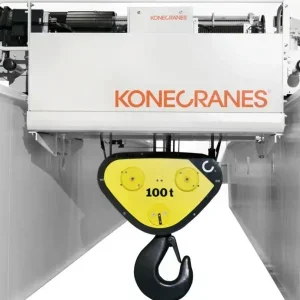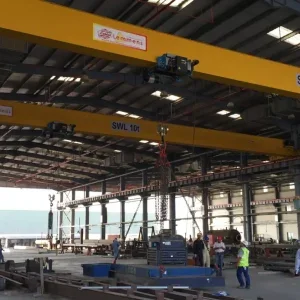TPKS is the second-largest container terminal in the Pelindo III Group, an Indonesian state-owned enterprise that manages 43 ports throughout seven provinces in Indonesia. Around 70% of its container traffic consists of international cargo.
The automation of the RTGs is provided through a next-generation automation platform, said Konecranes, and is used for processes such as fully automated stacking in the yard, Remote Operating Stations (ROSs) for truck handling, and related container yard infrastructure.
The ARTG system is built around Konecranes’s 16-wheel RTG, which is particularly suited for automation thanks to its in-built tolerance for local variations and rough yard surfaces, added Konecranes. The crane is equipped with active load control and auto-steering, a remote operating station with graphical user interface, IT architecture that is interfaced with the terminal operating system, and an intelligent gate that acts as the traffic control for the ARTG container on the block.
The system, which features advanced equipment control system teams by TBA/GBA, can also switch between container blocks without recalibration.
The ARTG’s anti-collision technology is based on lasers and real-time relative positioning, with trucks guided safely by a system that integrates truck-scanning and lights. A further scanning system ensures accuracy when picking and placing containers, and automated gantry travelling is achieved with dual-antenna DGPS auto-steering.
Konecranes Port Service APAC regional director Jukka Tukia said: “The Konecranes 16-wheel RTG is ideally suited to automation and provides an example of how to design for widely applicable future benefits. Not only can the crane be installed in its automated ARTG form, but also existing versions of the widely used 16-wheel RTG can be readily retrofitted. You can start with your current yard infrastructure as you move to fully automated RTG operation—step by step, block by block, to a fully automated yard.”
The latest ARTG system from Konecranes, version 2.0, offers a range of further benefits, said Tukia: “Konecranes is taking the RTG automation process a stage further with its ARTG Version 2.0, which can be retrofitted into any brownfield container terminal. It can fit any container stack envelope because it uses space very effectively. Additionally, truck handling is automated, with remote supervision. One remote supervisor can handle up to five ARTGs simultaneously.”
The Version 2.0 cranes are also equipped with the latest wireless communication technology, including wireless control signals and video signals, allowing ARTGs to be diesel-powered with no need for cable reels and fibre optics.
“The Konecranes ARTG system version 2.0 will be instrumental in driving the evolution of RTG-based container terminals to fully automated operation in the future,” said Tukia.
“With Konecranes ARTG 2.0, there’s no need for truck lane fencing. ARTG 2.0 has a redesigned safety concept built on the ARTG. “We like to call it the ‘street bogie’. It fits in your current yard envelope. This enables free truck flow with a bypass lane as you know it in conventional RTG yards.”
Recky Julius Uruilal, general manager at TPKS, said: “TPKS is constantly striving to improve our facilities to meet customer needs and boost our competitiveness. Konecranes is constantly innovating its products to meet container terminal needs, and by choosing them to provide new ARTG cranes, we have taken our operations to the next level of safety and efficiency.”
Tukia said: “The latest Konecranes technology installed at Pelindo III provides efficiency improvements in many areas, including operational efficiency, efficiency in utilising manpower, and efficiency in maintenance and support functions through modern tools such as Truconnect remote monitoring.”






